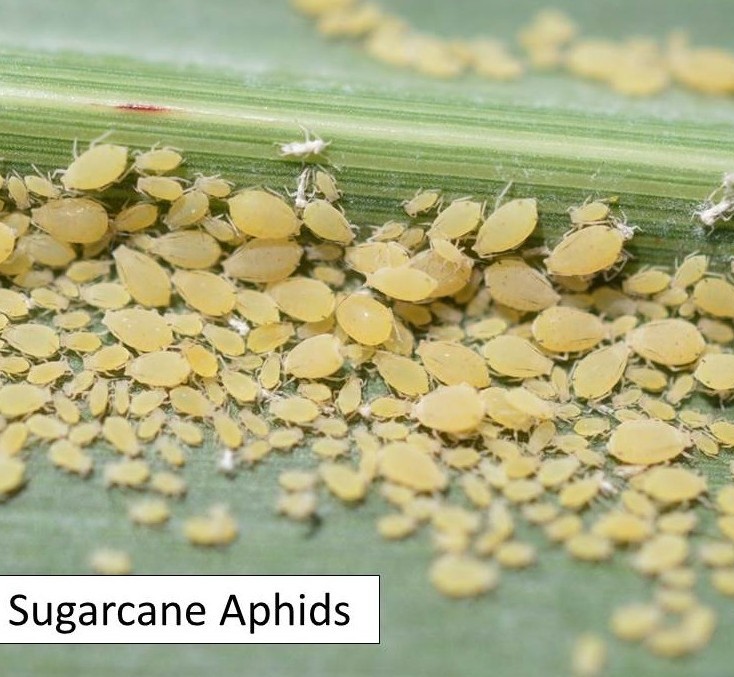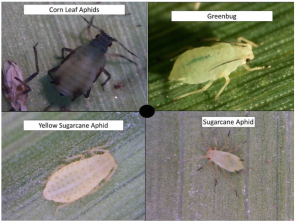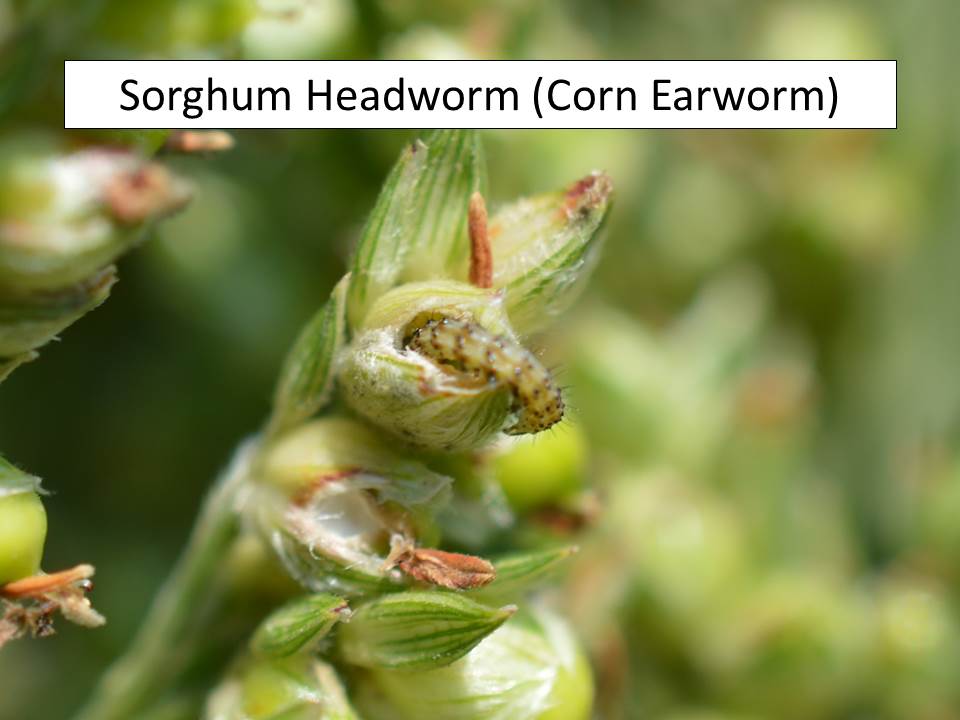–by J.P. Michaud
With sustained southerly winds continuing for the next 4-5 days, sugarcane aphids (SCA) are moving north. New detections this week include Barton, Ellsworth and Riley counties, with other in-between counties likely infested and only awaiting detection. Given the heavy populations of headworms this year (fall armyworm and corn earworm), I have been getting questions about how best to obtain control of both pests simultaneously. A lot of these worms are getting too big to treat and will pupate soon, so do not consider treatment if a majority (>50%) are more than 1.0-1.25 inches long.
Products of choice for SCA control are Transform® (sulfoxaflor, Dow Agro.) and Sivanto® (flupyradifurone, Bayer) that block aphid feeding and have good absorption into leaves (translaminar activity). However they will not control the headworms.

Sugarcane aphids moving from flag leaves into panicles
Products of choice for headworms are diamides such as Prevathon® (chlorantraniliprole, Dupont) and Belt® (flubendiamide, Bayer). They provide excellent control of caterpillars and require consumption by the insect to be activated, so they tend to be more selective for beneficial insects and pollinators. Labels on all these products contain instructions indicating their general compatibility with other products in tank mixes.
This morning I mixed up a blend of Transform and Prevathon in 200 ml of water and it seemed to form a nice ‘milk’ – I did not see any adverse reactions such as formation of a precipitate. The Transform is a wettable granule formulation, so add the granules first and agitate well before adding an emulsifiable concentrate or other liquid formulation. It is always a good idea to check a small mix in a jar first if you haven’t combined particular products before. Finally, I recommend avoiding the use of all pyrethroid materials in sorghum because of their potential to kill of beneficials and make the aphid problems even worse.





